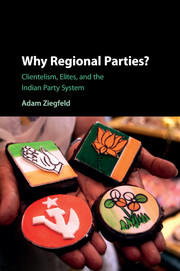Book contents
- Why Regional Parties?
- Why Regional Parties?
- Copyright page
- Dedication
- Contents
- Figures
- Tables
- Book part
- Further Information and Terminological Notes
- Indian Party Acronyms
- 1 Introduction
- 2 Definitions and Description
- 3 Theory
- 4 Evidence
- 5 Cross-National Variation
- 6 India’s Successful Regional Parties
- 7 Longitudinal Variation in India
- 8 Subnational Variation in India
- 9 Conclusion
- References
- Index
- References
References
Published online by Cambridge University Press: 05 March 2016
- Why Regional Parties?
- Why Regional Parties?
- Copyright page
- Dedication
- Contents
- Figures
- Tables
- Book part
- Further Information and Terminological Notes
- Indian Party Acronyms
- 1 Introduction
- 2 Definitions and Description
- 3 Theory
- 4 Evidence
- 5 Cross-National Variation
- 6 India’s Successful Regional Parties
- 7 Longitudinal Variation in India
- 8 Subnational Variation in India
- 9 Conclusion
- References
- Index
- References
- Type
- Chapter
- Information
- Why Regional Parties?Clientelism, Elites, and the Indian Party System, pp. 257 - 276Publisher: Cambridge University PressPrint publication year: 2016



